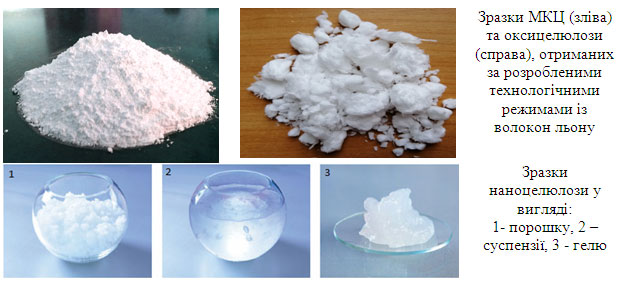Development of environmentally cleaner technologies for producing composite materials based on nanocellulose, microcrystalline and oxycellulose from domestic plant materials
It was found that cereal stems and industrial plant fibers contain more minerals than wood, which must be taken into account in the pulping process. The processes of cellulose production from stems and fibers of non-wood plant materials (NWPM) have been investigated with an ecologically safer organosolvent method of delignification using peracetic and performic acids. The influence of the main technological parameters of cooking on the quality indicators of theobtained pulp from NWPM is determined. Different schemes of flax and hemp fibers treatment for microcrystalline cellulose (MCC) quality parameters have been investigated. Obtained according to the developed scheme of MCC from flax fibers meets the requirements of the State Pharmacopoeia of Ukraine, which is confirmed by the Test Act of the experimental batch at the leading enterprise in the pharmaceutical industry. It was found that increasing the consumption of TEMRO oxidant, the duration and temperature of the oxidation process increases the content of carboxyl groups in the organosolvent cellulose oxycellulose. Optimal values of technological parameters of the process of obtaining oxycellulose have been determined. Nanocellulose (NC) obtained by the method of acid hydrolysis from organosolvent cellulose from NWRM. The optimal values of acid concentration and temperature, duration of the hydrolysis process and ultrasonic treatment are established. The possibility of using NC as a strengthening additive in the composition with cement paste is shown. It is proved that the application of nanocellulose suspension on the surface of corrugated paper and container board or to the mass of offset paper increases their physical and mechanical properties. Based on the results of the studies, normative and technical documentation was developed on the technologies for producing organosolvent cellulose, microcrystalline cellulose, oxycellulose, nanocellulose, and composite materials based on them from NWRM.

| Вложение | Размер |
|---|---|
| 584.95 КБ |




